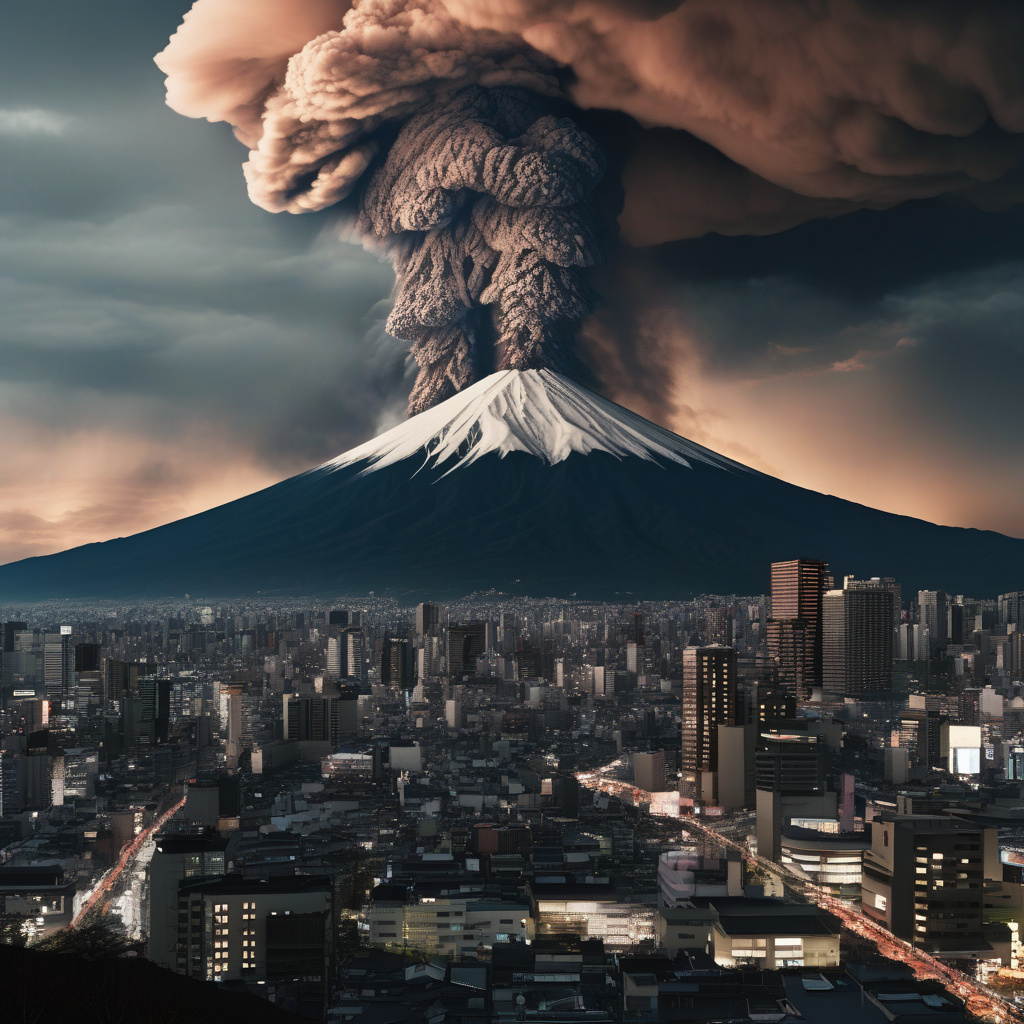Preparing for the Worst: Tokyo Officials Simulate Mount Fuji Eruption with AI
In a world where natural disasters can strike without warning, preparedness is key. Tokyo officials are taking this concept to the next level by simulating a Mount Fuji eruption using artificial intelligence. This innovative approach aims to help residents and authorities understand the potential impact of such a catastrophic event and take necessary precautions.
The simulation conducted by Tokyo officials is a wake-up call for the city’s residents. It highlights the importance of being ready for the worst-case scenario and having essential supplies on hand. According to the simulation, masks, goggles, and three days’ worth of food are among the items that Tokyo officials advise keeping in stock in case of a Mount Fuji eruption.
But why these specific items? In the event of a volcanic eruption, ash and debris can quickly spread over a wide area, posing serious health risks to those exposed. Masks and goggles can help protect individuals from inhaling harmful particles and keep their eyes safe from irritation. Additionally, having an ample supply of food that doesn’t require refrigeration or cooking ensures that residents can sustain themselves until the situation stabilizes.
This simulation serves as a stark reminder of the unpredictable nature of natural disasters and the importance of having a well-thought-out emergency plan in place. It’s not just about reacting to a crisis as it unfolds but also about proactively preparing for it to minimize its impact.
In the digital age, AI technology plays a crucial role in helping authorities simulate various disaster scenarios and develop effective response strategies. By leveraging AI, Tokyo officials can create realistic simulations that provide valuable insights into the potential consequences of a Mount Fuji eruption. This, in turn, allows them to make informed decisions on resource allocation, evacuation procedures, and communication strategies.
Moreover, the use of AI in disaster preparedness is not limited to simulations. AI-powered systems can analyze vast amounts of data in real-time to detect early warning signs of an impending disaster, giving authorities more time to issue alerts and take preventive measures. This proactive approach can save lives and minimize the damage caused by natural disasters.
As Tokyo continues to embrace technology and innovation in its disaster preparedness efforts, other cities around the world can learn valuable lessons from its example. Investing in AI-powered solutions for disaster management is not just about keeping up with the latest trends; it’s about safeguarding the well-being of communities and building resilience in the face of uncertainty.
In conclusion, the simulation of a Mount Fuji eruption using AI serves as a powerful reminder of the importance of preparedness in the face of natural disasters. By heeding the advice of Tokyo officials and stocking up on essential supplies, residents can better protect themselves in the event of a crisis. As technology continues to advance, leveraging AI for disaster preparedness will become increasingly vital in ensuring the safety and security of communities worldwide.
#TokyoOfficials, #MountFujiEruption, #AItechnology, #DisasterPreparedness, #NaturalDisastersPrevention
